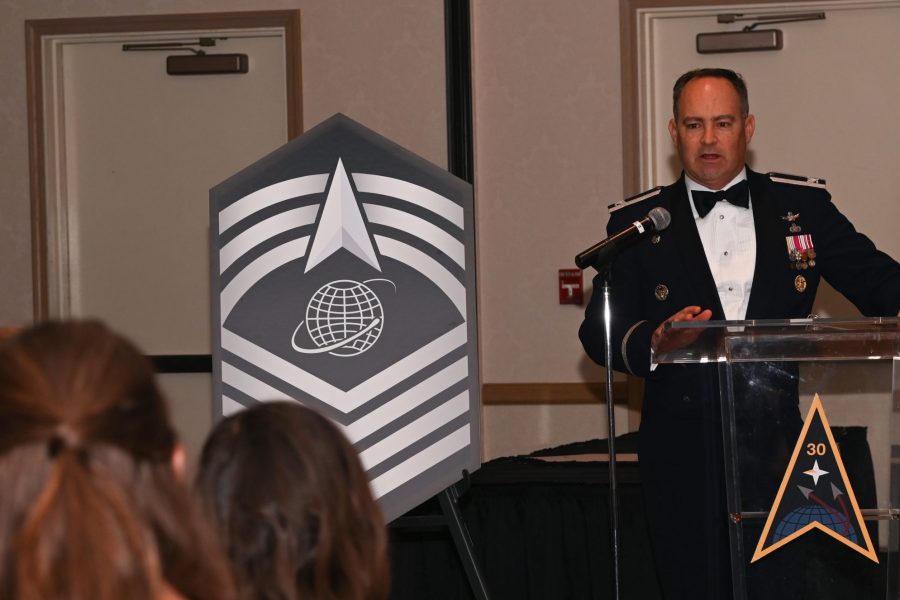While promotion rates took off for the Space Force’s junior noncommissioned officer corps in 2024, their senior NCO counterparts weren’t as lucky, as the service released statistics and a list of those selected on Nov. 21.
All told, the Space Force is minting:
- 14 new chief master sergeants out of 68 eligible Guardians, for a rate of 20.6 percent
- 25 new senior master sergeants out of 435 eligible Guardians, for a rate of 5.75 percent
A list of those selected is available on the Air Force Personnel Center website.
The total number of promotions to chief master sergeant has held steady for the last three years at 14-15 Guardians, after a few cycles ramping up following the service’s founding in 2019. But the pool of those eligible has been on a continued upward trajectory—the 68 Guardians in this cycle was the most ever.
Accordingly, the promotion rate was the lowest since the Space Force’s first ever cycle in 2020, when two of eight senior master sergeants were selected.
Another notable point released in AFPC’s statistics is the time in service of those promoted was 19.42 years, the first time that has dipped below 20 years.
The competition to become a senior master sergeant is also getting tougher. The pool of 435 eligible was the biggest ever and a third more than as recently as 2022. At the same time, the service is also selecting fewer people for promotion, even accounting for the small sample size, going from 35 promotions in 2022 to 30 in 2023 and 25 this year.
Unsurprisingly, the 5.75 percent promotion rate was the lowest ever for the grade.
These promotion rates stand in marked contrast to the middle tier of NCO ranks in the Space Force. Back in June, the service announced it was promoting 95.66 percent of those eligible to sergeant, and 63.87 percent of those eligible to technical sergeant. Both were the highest marks ever for those ranks in the Space Force’s short history.
The service did announce at the time that it was promoting just 21.34 percent of those eligible to master sergeant, a decline from last year and a harbinger of the lower rates for senior NCOs.
With its small size and young history, the Space Force has spent much of the past few years building out its ranks and developing its structure. In September, though, Chief Master Sergeant of the Space Force John F. Bentivegna unveiled an ambitious project to transform the career paths for the 4,900 enlisted Guardians. The project could include changes to everything from recruiting to tech school to career advancement, a phrase Bentivegna prefers over promotion, which he believes has a more competitive connotation.
Making things even more complex is the Space Force’s plan to fold Air Force Reservists into its ranks as part on a single component in which Guardians can work part-time or full-time. The service is still working on the HR systems for that change—and on how it will handle promotions.
